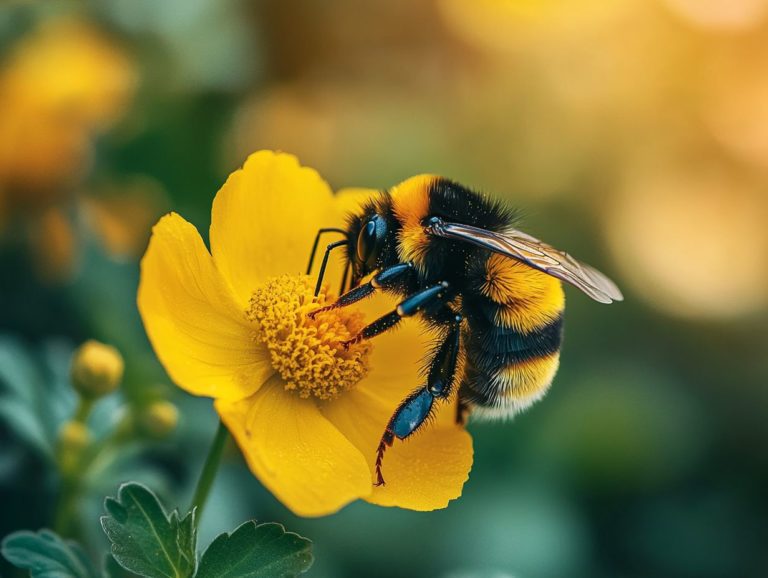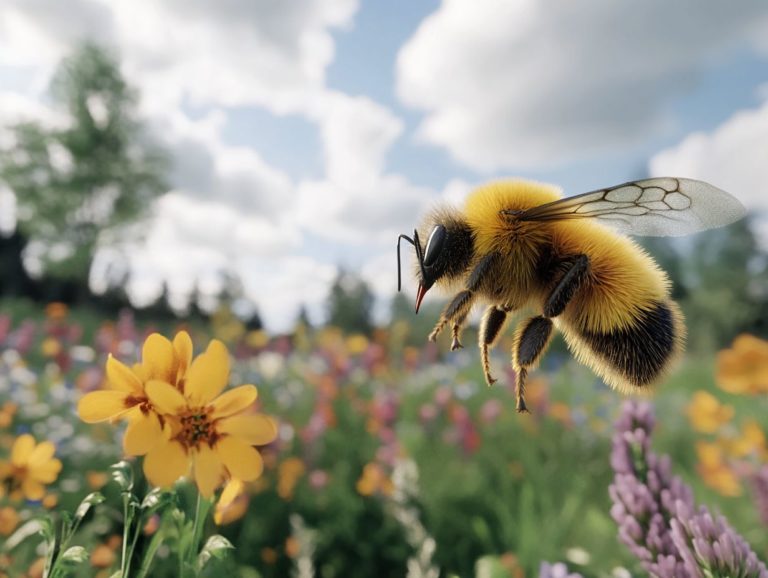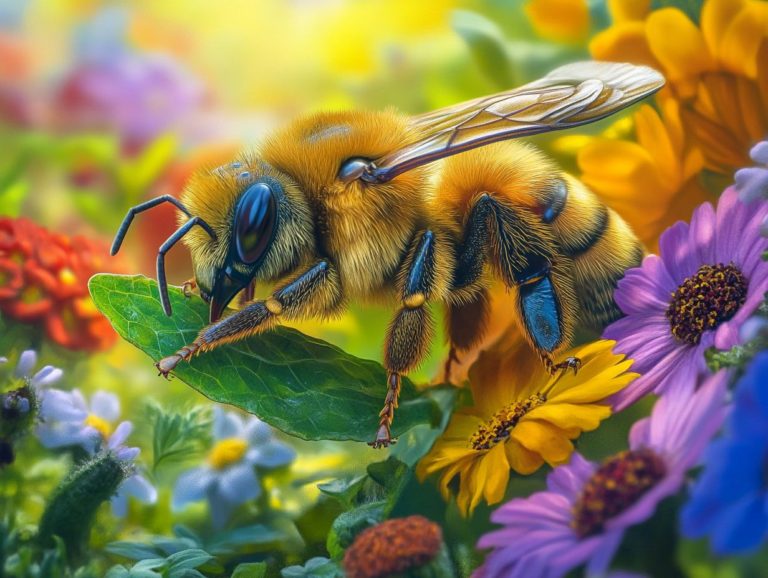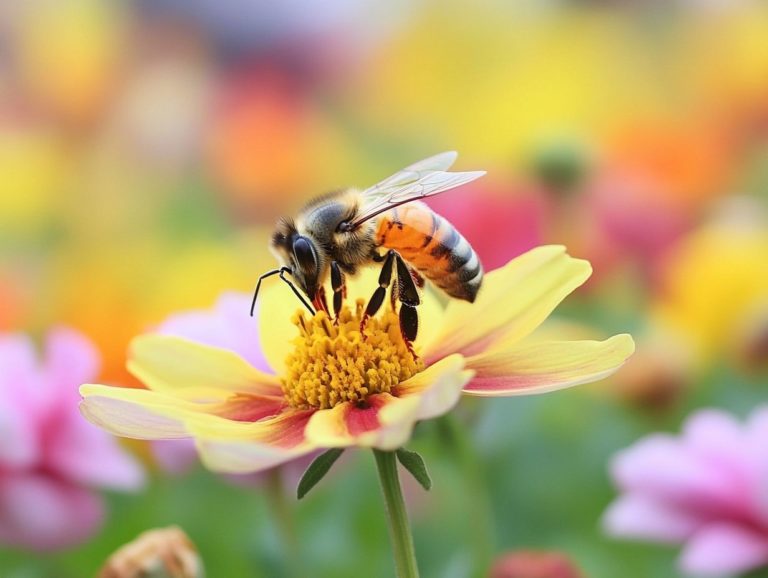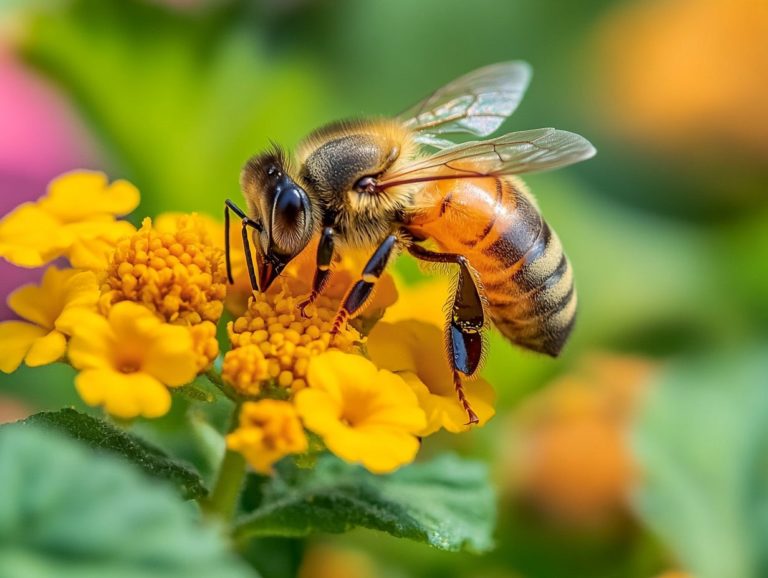5 Facts About Honey Bee Communication
Honey bees are truly remarkable creatures, not only for their vital role in pollination, honey production, and beekeeping but also for their intricate methods of communication.
From their mesmerizing dance movements that relay crucial information about food sources to the chemical signals released by the queen bee to maintain harmony within the hive, honey bees have developed a smart way of talking that is essential for their survival.
Here are five fascinating facts about how these tiny yet mighty pollinators communicate and the significance of their interactions:
Get ready to explore the amazing world of honey bee communication!
Contents
- Key Takeaways:
- 1. Honey Bees Use Dance Movements to Communicate
- 2. They Can Communicate the Distance and Direction of a Food Source
- 3. The Queen Bee Releases Pheromones to Communicate with the Colony
- 4. They Can Also Use Vibrations to Communicate
- 5. Honey Bees Have a Complex System of Communication
- Why Is Communication Important for Honey Bees?
- Frequently Asked Questions
Key Takeaways:
- Honey bees use dance movements to communicate, indicating the distance and direction of a food source.
- The queen bee releases pheromones to communicate with the colony, influencing their behavior and organization.
- Honey bees also use vibrations to communicate, such as the “piping” sound made by virgin queen bees to signal their presence.
1. Honey Bees Use Dance Movements to Communicate
Honey bees engage in captivating dance movements that allow them to convey crucial information about food sources, hive conditions, and overall colony dynamics. By examining these behaviors, you can gain valuable insights into how these remarkable pollinators navigate their surroundings. This ultimately influences agriculture and honey production.
One of the most striking movements is the waggle dance, which acts as a directional guide for fellow bees seeking nectar-rich flowers. During this dance, the forager bee performs a series of precise movements that indicate both the distance and angle of the food source in relation to the sun. This behavior shares vital foraging information and strengthens hive organization, enabling bees to work together to maintain a healthy and productive colony.
Such efficient communication plays a key role in the overall vitality of the bee collective, highlighting the intricate relationship between their social structure and the ecosystem they sustain.
2. They Can Communicate the Distance and Direction of a Food Source
Honey bees possess a remarkable ability to communicate the distance and direction of food sources through their intricate waggle dance, a behavior essential for foraging efficiency within their colonies.
During this captivating dance, the duration of the waggle phase reveals how far away the food is, while the angle at which the bee dances in relation to the sun provides precise directional cues. This communication system enables other bees to navigate effectively, minimizing the time spent searching for resources and maximizing honey production.
This efficiency enhances the colony’s capacity to gather nectar and ensures a sustainable food supply, which is crucial for the overall health of the hive.
Bees thrive on floral diversity for optimal honey production. This method of sharing information significantly contributes to ecosystem balance, agricultural productivity, and the overall health of the economy that relies on these pollinators.
3. The Queen Bee Releases Pheromones to Communicate with the Colony
The queen bee serves as the heartbeat of hive communication, releasing pheromones that convey her presence, reproductive status, and the colony’s overall health. This ensures social harmony within the hive.
One of the most critical pheromones she produces is the queen mandibular pheromone (QMP). This chemical signals her fertility and inhibits the development of worker bees’ ovaries, helping them stay focused on their essential roles within the colony.
This system of chemical communication promotes behaviors such as foraging, nursing, and hive maintenance. It establishes a hierarchy and fosters collaboration among the worker bees. The presence of these pheromones is vital for the stability of the hive; when the queen s pheromones start to fade, it can lead to unrest, heightened aggression, or even swarming, jeopardizing productivity and survival rates.
In essence, pheromone signaling is fundamental to the flourishing of bee society.
4. They Can Also Use Vibrations to Communicate
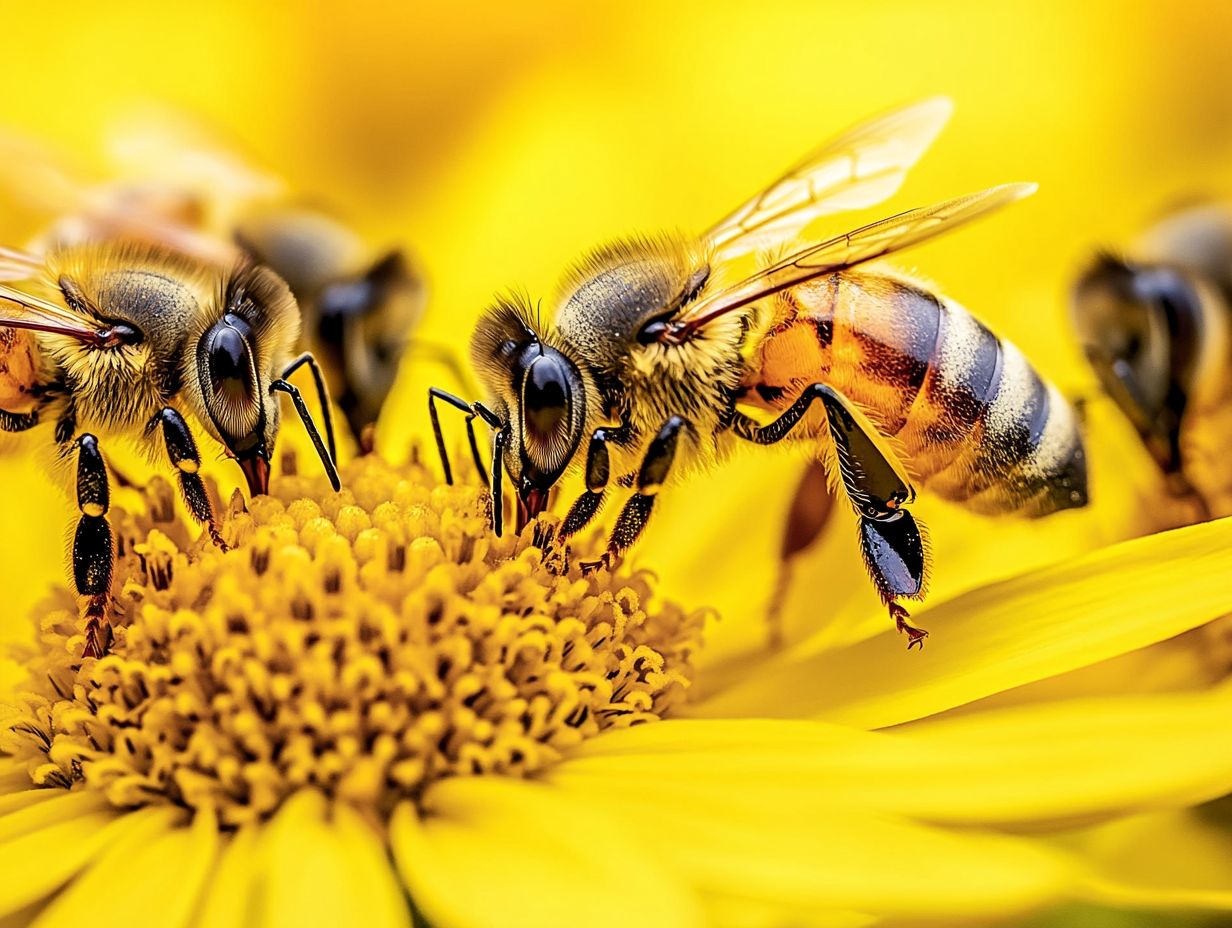
Besides their mesmerizing dances and the interesting use of scents, honey bees also harness vibrations as a sophisticated means of communication. Within the hive, these subtle movements convey vital messages, ranging from alarm signals to the discovery of food, and even calls for assistance in critical situations.
These vibrations travel seamlessly through the hive’s intricate architecture, allowing bees to pick up on important cues without relying solely on bee vision or scent. For instance, when foragers stumble upon a bountiful food source, they generate rapid vibrations to alert their fellow nestmates. This action sets off a coordinated response among the worker bees.
Such communication becomes even more crucial during emergencies. A sudden threat, be it a predator or an environmental disturbance, can trigger vibrations that swiftly alert the entire colony, ensuring a prompt and effective reaction.
These vibrational cues are essential for maintaining the hive’s social structure and operational efficiency, fostering cooperation among the bees and ultimately enhancing their chances of survival.
5. Honey Bees Have a Complex System of Communication
Honey bees showcase an incredibly intricate communication system, blending various methods like dance movements, pheromones, and vibrations to convey essential information crucial for the survival and operation of their colonies.
These communication techniques serve distinct yet complementary purposes, facilitating vital interactions within the hive. When foragers stumble upon a bountiful nectar source, they perform the waggle dance, which encodes the direction and distance of that resource. Concurrently, they release pheromones to draw in other bees and signal the urgency of the find. This layered approach to communication ensures that the entire colony can mobilize effectively, boosting their foraging success.
In moments of threat, vibrations are used to alert the hive to impending danger, showcasing yet another dimension of this dynamic communication network. By harnessing these diverse signals, bees can quickly adapt to changing environments, reinforcing their unity as a remarkable superorganism (a term used to describe a group of organisms that function together as a single entity).
Why Is Communication Important for Honey Bees?
Communication among honey bees is not just important; it is critical; it is vital for their survival. It fosters cooperation within the colony and boosts foraging efficiency, ultimately upholding the agricultural ecosystem that relies on these vital pollinators for honey production and crop cultivation.
Moreover, communication helps in temperature regulation within the hive, which is crucial for the development of larvae and the production of royal jelly.
Through intricate movements like the waggle dance, these extraordinary insects convey crucial information about the location and quality of food sources. This dance not only benefits their own hive but also sustains the biodiversity of the environments they pollinate. This amazing teamwork showcases how crucial honey bees are for agriculture, where effective communication can lead to increased crop yields and healthier ecosystems.
The economic impact of their pollination services is staggering, contributing billions annually to global food production. By ensuring a thriving colony through efficient communication, honey bees significantly enhance resilience and stability in both agricultural practices and natural habitats.
How Do Honey Bees Learn to Communicate?
Honey bees master the art of communication through a fascinating blend of natural behaviors and social interactions within the hive. This unique adaptability enables them to fine-tune their communication methods based on personal experiences and environmental cues.
These remarkable insects engage in an intriguing process of observation and mimicry. Younger bees watch their more experienced counterparts to learn hive life. By imitating the dances and movements of these seasoned members, they hone their own skills, ultimately enhancing foraging efficiency and hive coordination.
As time passes, this experiential learning not only sharpens individual abilities but also cultivates a richer communal language that can be utilized in a variety of circumstances. Navigating their ever-changing environments, these bees demonstrate how experience shapes their social interactions, resulting in a dynamic communication system that is crucial for the survival of their colony. Understanding these behaviors can help us see how threats like pesticides impact their communication.
What Are the Different Types of Dances Used by Honey Bees?
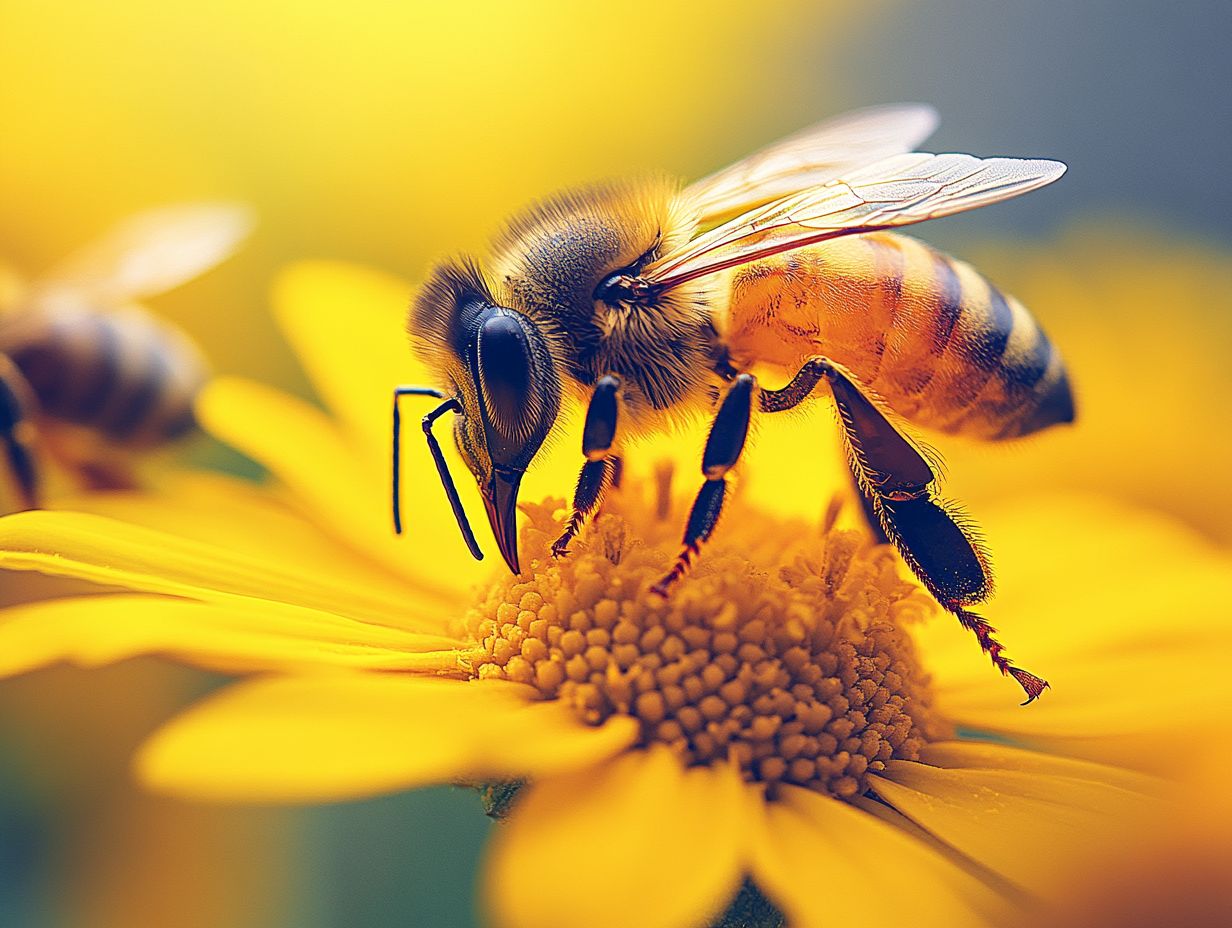
Honey bees employ a fascinating array of dances, including the waggle dance and the round dance, each tailored to convey specific information about food sources and the conditions within the hive.
The waggle dance encodes distance and direction of food related to the sun. This dance includes straight runs and turns that communicate how far away that tasty treat is. Besides the waggle dance, bees also perform the round dance, which indicates nearby nectar sources.
The round dance works differently. It shows bees where food is nearby, but doesn t tell them how far away it is. This behavior highlights interesting facts about bees and their communication methods.
Bees decipher these dances through their acute observational skills and sensitivity to vibrations, which ultimately shapes their foraging behavior. This prompts some to venture out of the beehive in search of rewarding food sources while ensuring that communication within the hive remains efficient. This intricate bee anatomy and communication enhance their overall efficiency.
How Do Honey Bees Use Pheromones to Communicate?
Honey bees mainly communicate using pheromones. The queen releases specific chemicals that guide worker bees, effectively coordinating activities within the colony.
These chemical signals are essential to various aspects of colony life, from reproductive functions to navigation. For example, when a colony senses danger, alarm pheromones are released, prompting the bees to adopt a more aggressive and protective stance, thereby warning other members of the hive. This is a fascinating aspect of the bee lifecycle.
During swarming a crucial phase in bee reproduction pheromones guide scouting bees to potential new nesting sites. Other pheromones also signal food sources. This helps in successful foraging and sharing resources. In ancient times, ancient Egyptians were keen observers of bee behavior during swarming to understand honey production.
This intricate interplay of chemical signals underscores the sophisticated social structure and behavioral organization that defines bee communities. This is a testament to how superorganism dynamics work in nature!
Want to learn more about these amazing creatures and how to help protect them? Every little effort counts!
What Are the Other Ways Honey Bees Communicate?
Honey bees communicate through various methods, including dances and chemical signals known as pheromones. They also use vibrations and visual signals to share vital information about hive conditions and foraging opportunities.
These vibrations, caused by their body movements, convey urgency and direction, guiding fellow bees to nectar sources. Visual cues, like the positioning and activity of hive members, help coordinate collective tasks.
For example, the way a bee moves or stands indicates its role whether nursing, foraging, or defending the colony. These roles are essential for the hive’s health and success.
All these communication methods create a sophisticated system that boosts teamwork and efficiency in the hive. They also help the bees produce bee bread and beeswax, which are crucial for the hive’s sustainability.
How Does Honey Bee Communication Benefit the Colony?
Effective communication enhances the dynamics within the colony, fostering cooperation and refining foraging strategies. It ensures a quick response to threats, which is vital for the hive’s survival.
When foragers find a rich nectar source, they perform the waggle dance. This dance conveys precise details about the location, quality, and distance of food, motivating others to join in and improving food collection efficiency. This is crucial for pollination, which supports agriculture and the economy.
Communication also helps detect threats. Alarm pheromones released by guard bees alert the hive, prompting a swift, coordinated response. This teamwork bolsters resource management and strengthens the colony against predators and environmental challenges.
Frequently Asked Questions
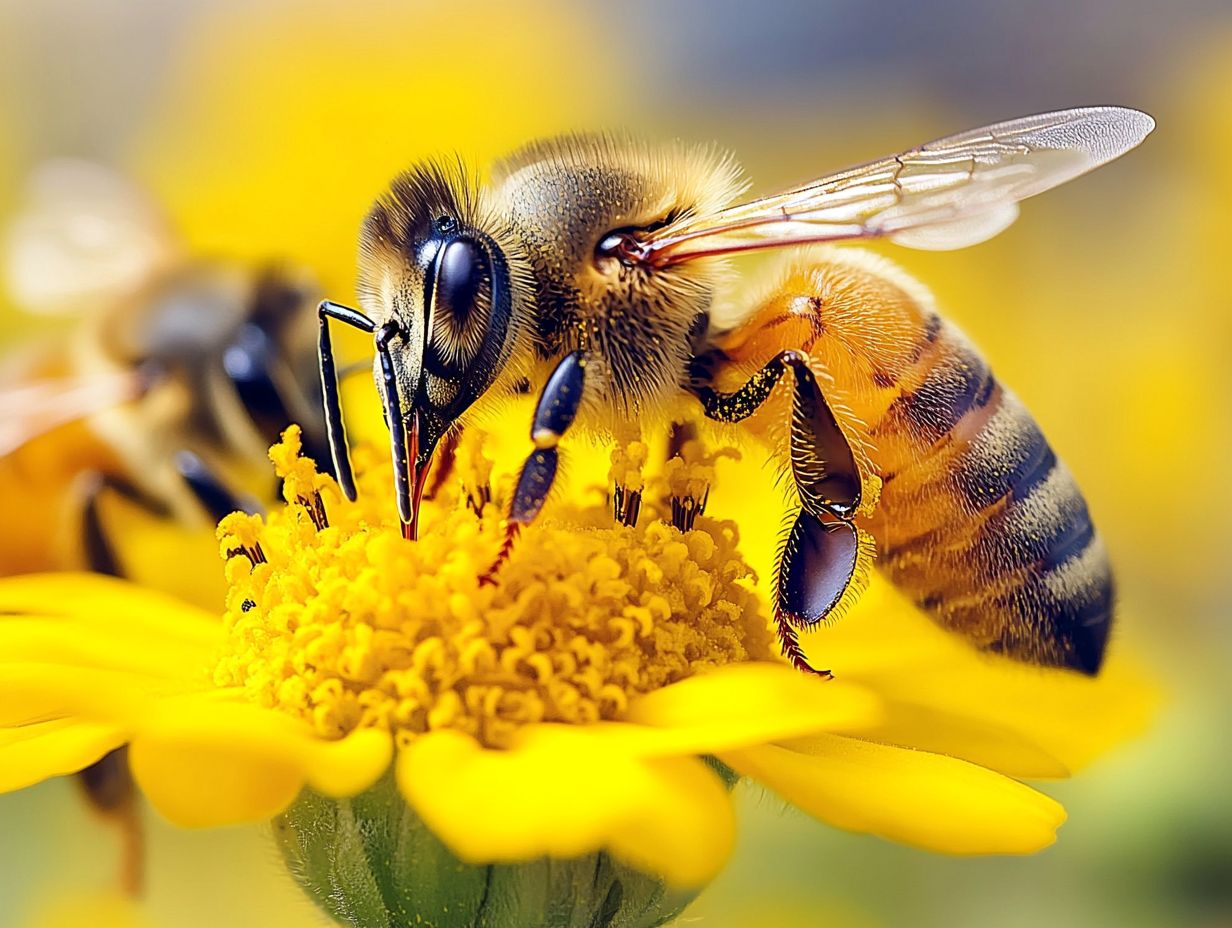
What is honey bee communication?
Honey bee communication refers to how bees share information with each other about food locations and threats. This knowledge dates back to ancient Egyptians, who documented these behaviors and advanced our understanding of honey production.
How do honey bees communicate with each other?
Honey bees primarily use pheromones, which are chemical signals they release. They also employ touch and movement, including the waggle dance, to convey important information.
What is the importance of honey bee communication?
Communication is crucial for hive survival. It enables bees to work together on tasks like foraging and defense, benefiting the entire colony. This teamwork is vital for producing royal jelly, which is key to developing queen bees.
Do different types of honey bees communicate differently?
Yes, different honey bee types have specific roles and communication methods. Worker bees use pheromones and dances, while queen bees primarily use pheromones to manage colony behavior. Drone bees have unique roles, especially during mating.
Can honey bees communicate with other species?
Yes, honey bees are known to communicate with other species, such as flowers and predators. They use pheromones and other signals to signal to other species, in order to collect food or warn of danger. Additionally, solitary bees and native bees have their own unique communication methods that are vital to their survival.
Is honey bee communication affected by environmental factors?
Yes, environmental factors such as temperature, humidity, and availability of resources can affect honey bee communication. For example, bees may use different types of dances to communicate food sources depending on the weather conditions. Understanding these factors is essential for beekeeping practices.

